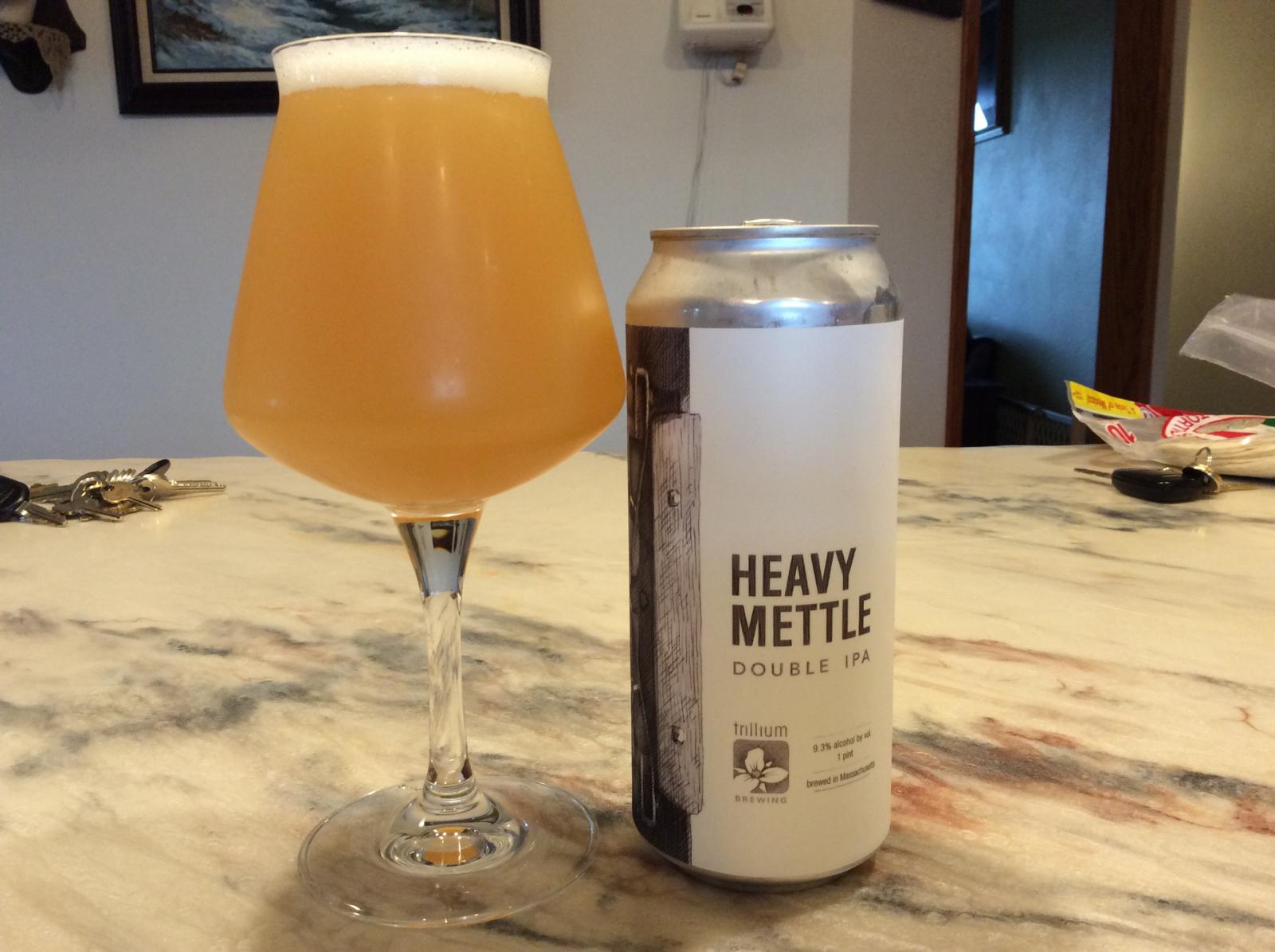berndawg84
Well-Known Member
- Joined
- Sep 29, 2016
- Messages
- 94
- Reaction score
- 23
Hope this isn't too much of a thread hijack. Wanted to get some feedback on the hopping for this NE IPA. I'm pretty set with the grain bill. I used WeldWerks Juicy Bits IPA as a basis. According to Brewer's Friend, the calculated IBU for this is only 33, but I'm guessing it'll taste more bitter than this due to flameout hops and whirlpool hops? Also, has anyone used Vic Secret in a NE IPA? Seems like an intriguing option. The WeldWerks beer uses Citra, Mosaic and El Dorado, so I'm just tweaking that slightly. Thanks.
Juice Bomb
Method: BIAB
Style: American IPA
Boil Time: 60 min
Batch Size: 3 gallons (fermentor volume)
Boil Size: 5 gallons
Boil Gravity: 1.038 (recipe based estimate)
Efficiency: 65% (brew house)
Original Gravity:
1.063
Final Gravity:
1.016
ABV (standard):
6.26%
IBU (tinseth):
33.14
SRM (morey):
4.49
Fermentables
Amount Fermentable PPG °L Bill %
6.3 lb American - Pale 2-Row 37 1.8 78%
0.7 lb Flaked Wheat 34 2 8.7%
0.7 lb Flaked Oats 33 2.2 8.7%
6 oz American - Carapils (Dextrine Malt) 33 1.8 4.6%
8.08 lb Total
Hops
Amount Variety Type AA Use Time IBU
0.2 oz Citra Pellet 11 First Wort 9.47
0.2 oz Mosaic Pellet 12.5 First Wort 10.76
0.2 oz Vic Secret Pellet 15 First Wort 12.91
0.1 oz Citra Pellet 11 Boil 0 min
0.15 oz Mosaic Pellet 12.5 Boil 0 min
0.1 oz Vic Secret Pellet 15 Boil 0 min
0.1 oz Citra Pellet 11 Whirlpool at °F 40 min
0.1 oz Mosaic Pellet 12.5 Whirlpool at °F 40 min
0.1 oz Vic Secret Pellet 15 Whirlpool at °F 40 min
0.22 oz Citra Pellet 11 Whirlpool at °F 30 min
0.22 oz Mosaic Pellet 12.5 Whirlpool at °F 30 min
0.22 oz Vic Secret Pellet 15 Whirlpool at °F 30 min
0.6 oz Citra Pellet 11 Whirlpool at °F 20 min
0.3 oz Mosaic Pellet 12.5 Whirlpool at °F 20 min
0.3 oz Vic Secret Pellet 15 Whirlpool at °F 20 min
0.5 oz Citra Pellet 11 Dry Hop 4 days
0.5 oz Mosaic Pellet 12.5 Dry Hop 4 days
0.5 oz Vic Secret Pellet 15 Dry Hop 4 days
0.33 oz Citra Pellet 11 Dry Hop 8 days
0.65 oz Mosaic Pellet 12.5 Dry Hop 8 days
0.33 oz Vic Secret Pellet 15 Dry Hop 8 days
Hops Summary
Amount Variety Type AA
2.05 oz Citra Pellet 11
2.12 oz Mosaic Pellet 12.5
1.75 oz Vic Secret Pellet 15
Mash Guidelines
Amount Description Type Temp Time
-- Infusion 149 F 60 min
Yeast
Wyeast - London Ale III 1318
Juice Bomb
Method: BIAB
Style: American IPA
Boil Time: 60 min
Batch Size: 3 gallons (fermentor volume)
Boil Size: 5 gallons
Boil Gravity: 1.038 (recipe based estimate)
Efficiency: 65% (brew house)
Original Gravity:
1.063
Final Gravity:
1.016
ABV (standard):
6.26%
IBU (tinseth):
33.14
SRM (morey):
4.49
Fermentables
Amount Fermentable PPG °L Bill %
6.3 lb American - Pale 2-Row 37 1.8 78%
0.7 lb Flaked Wheat 34 2 8.7%
0.7 lb Flaked Oats 33 2.2 8.7%
6 oz American - Carapils (Dextrine Malt) 33 1.8 4.6%
8.08 lb Total
Hops
Amount Variety Type AA Use Time IBU
0.2 oz Citra Pellet 11 First Wort 9.47
0.2 oz Mosaic Pellet 12.5 First Wort 10.76
0.2 oz Vic Secret Pellet 15 First Wort 12.91
0.1 oz Citra Pellet 11 Boil 0 min
0.15 oz Mosaic Pellet 12.5 Boil 0 min
0.1 oz Vic Secret Pellet 15 Boil 0 min
0.1 oz Citra Pellet 11 Whirlpool at °F 40 min
0.1 oz Mosaic Pellet 12.5 Whirlpool at °F 40 min
0.1 oz Vic Secret Pellet 15 Whirlpool at °F 40 min
0.22 oz Citra Pellet 11 Whirlpool at °F 30 min
0.22 oz Mosaic Pellet 12.5 Whirlpool at °F 30 min
0.22 oz Vic Secret Pellet 15 Whirlpool at °F 30 min
0.6 oz Citra Pellet 11 Whirlpool at °F 20 min
0.3 oz Mosaic Pellet 12.5 Whirlpool at °F 20 min
0.3 oz Vic Secret Pellet 15 Whirlpool at °F 20 min
0.5 oz Citra Pellet 11 Dry Hop 4 days
0.5 oz Mosaic Pellet 12.5 Dry Hop 4 days
0.5 oz Vic Secret Pellet 15 Dry Hop 4 days
0.33 oz Citra Pellet 11 Dry Hop 8 days
0.65 oz Mosaic Pellet 12.5 Dry Hop 8 days
0.33 oz Vic Secret Pellet 15 Dry Hop 8 days
Hops Summary
Amount Variety Type AA
2.05 oz Citra Pellet 11
2.12 oz Mosaic Pellet 12.5
1.75 oz Vic Secret Pellet 15
Mash Guidelines
Amount Description Type Temp Time
-- Infusion 149 F 60 min
Yeast
Wyeast - London Ale III 1318







